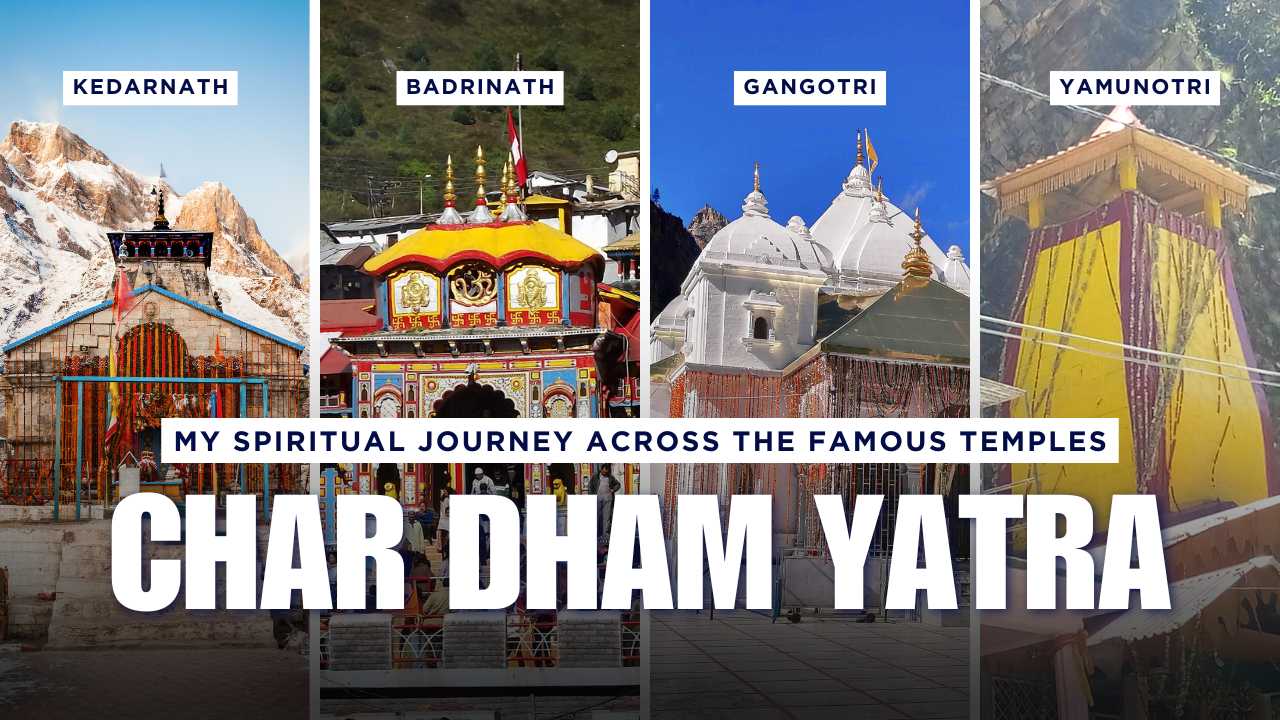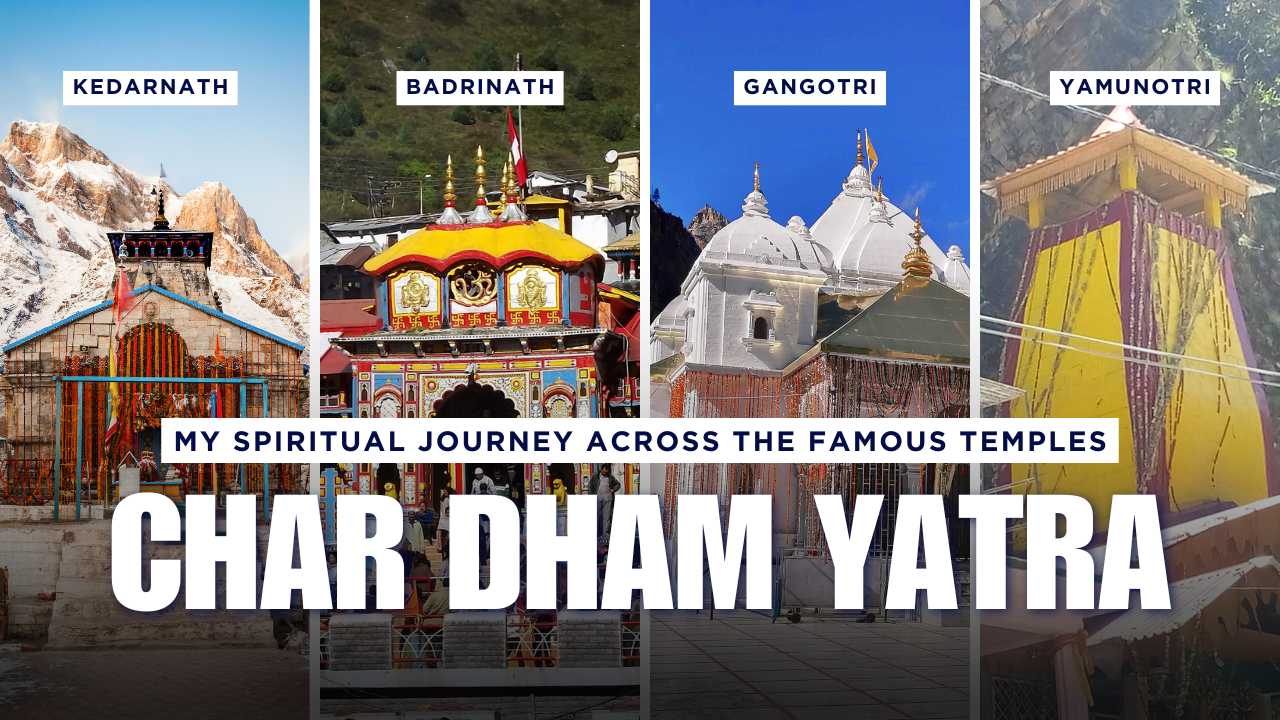Finding Your Perfect Window: Best Time to Visit Chardham Yatra for Fewer Crowds & Ideal Weather
The Chardham Yatra (चारधाम यात्रा) is a deeply personal and spiritual journey to the four revered abodes in the Himalayas. For many pilgrims, the ideal experience involves not only divine blessings but also a comfortable journey with pleasant weather and manageable crowds. However, navigating the mountainous terrain and unpredictable 'मौसम' (Mausam - weather) of Uttarakhand requires careful timing. The question of **"What is the best time to visit Chardham Yatra to avoid crowds and bad weather?"** is a frequently asked one, especially for those currently in Haridwar, observing the full swing of the monsoon season.
The Opening & Closing of the Dhams: Defining the Season
The Chardham temples (Yamunotri, Gangotri, Kedarnath, and Badrinath) are situated at high altitudes and remain closed for approximately six months during winter due to heavy snowfall. The Yatra season generally runs from late April or early May, when the temples open, until late October or early November, when they close for the winter. These fixed opening and closing dates, usually determined by auspicious Hindu calendar dates (like Akshaya Tritiya for openings and Bhai Dooj for closings), define the window for pilgrimage.
Understanding the Seasons for Chardham Yatra
Let us break down the Yatra season into distinct periods to help you make an informed decision:
1. Peak Season (May & Early June)
- Pros: This period generally offers the most pleasant weather conditions with clear skies, mild temperatures, and in early May, the majestic sight of snow-capped peaks. All services are fully operational, and the route is bustling.
- Cons: This is by far the **busiest time** for the Chardham Yatra. You will encounter **massive crowds**, long queues for darshan, heavy traffic congestion on the roads, and inflated prices for accommodation, transport, and other services. If your goal is to avoid crowds, this is **not the ideal time**.
2. Monsoon Season (Mid-June to Mid-September)
(Current time, July 5, 2025, falls squarely within this period)
- Pros: This period sees a significant **reduction in pilgrim numbers**, especially from mid-July to August, offering a less crowded experience. The landscape is incredibly lush and green, and the air feels clean and refreshed after the rains.
- Cons: This is undeniably the period of **"bad weather"** for travel. You will encounter:
- Heavy and continuous rainfall, making paths slippery and driving challenging.
- Frequent landslides and road blockages ('भूस्खलन' - Bhuskhalan), leading to unpredictable and often prolonged travel delays.
- Increased health risks, including colds, flu, and waterborne diseases due to dampness and potential contamination.
- Foggy conditions, severely impacting visibility, especially at higher altitudes.
- Risk of hypothermia due to cold and dampness.
- Recommendation: Undertaking the Yatra during monsoon is only advisable for pilgrims who are adventurous, highly flexible, and extremely well-prepared for delays and discomfort. If comfort, smooth travel, and minimal risk are priorities, it is **best to avoid this season**.
3. Post-Monsoon / Autumn Season (Late September to Mid-October)
- Pros: This period is generally considered the BEST time to visit Chardham Yatra to avoid both massive crowds and bad weather.
- Fewer Crowds: The rush from the initial peak season has subsided, and pilgrim numbers are significantly lower. This allows for a more peaceful and serene darshan experience.
- Excellent Weather: The monsoon has typically receded, leaving behind clear skies, crisp air, and stable weather conditions. The landscape is vibrant with autumn colors.
- Reduced Risks: The risk of landslides is significantly lower compared to monsoon, and roads are generally clear and stable.
- Pleasant Temperatures: The temperatures are ideal for trekking and travel, neither too hot nor too cold.
- Cons: As you approach late October, temperatures start dropping noticeably, especially in the evenings and at higher Dhams. Services (food stalls, transport options) might begin to wind down towards the very end of October in preparation for winter closure.
4. Late October to Early November (Closing Period)
- Pros: This period offers true solitude for pilgrims, with very few crowds. The autumn colors are often at their most vivid.
- Cons: It can get **very cold**, and there is a high possibility of early snowfall, particularly at Kedarnath and Badrinath. Many services (accommodation, food vendors, transport) will be rapidly closing down. This period is only recommended for hardy and experienced travelers who are fully prepared for extreme cold and limited facilities.
The "Sweet Spot" for Avoiding Crowds & Bad Weather: Late September to Mid-October
For those seeking the ideal balance between fewer crowds and pleasant, stable weather conditions, the period from **late September to mid-October** after the monsoon has passed is undoubtedly the prime window. The skies are generally clear, the air is crisp, and the spiritual atmosphere is more tranquil without the bustling rush of the peak summer months.
Planning for the "Best Time"
- Book in Advance: Even though this period sees fewer crowds than May-June, its popularity is growing. It is wise to book your accommodation and transport well in advance to secure your preferred options.
- Pack in Layers: While the weather is generally pleasant, temperatures can fluctuate between day and night, and as you gain altitude. Packing layers allows you to adapt comfortably.
- Check Festival Dates: Be aware of any major festival dates (like Diwali) that might fall in late October, as these could still attract a temporary surge in pilgrims, potentially affecting temple closing dates.
While the spiritual calling of the Chardham Yatra transcends all seasons, choosing the right time to visit can significantly enhance your experience. For a harmonious blend of clear skies, comfortable temperatures, and a more serene atmosphere, the post-monsoon period offers the most ideal conditions for your divine journey to the revered abodes in the Himalayas.
Your Questions Answered: FAQs About Best Time to Visit Chardham
- Q1: When is the peak season for Chardham Yatra, and why should I avoid it if I want to skip crowds?
A: The peak season is **May and early June**. You should avoid it if you want to skip crowds because it experiences **massive pilgrim numbers**, leading to very long queues for darshan, heavy traffic, and significantly inflated prices for all services. - Q2: Is it safe to visit Chardham Yatra during the monsoon season (July-August)?
A: Visiting during monsoon (like current July) is **generally not recommended for comfort and safety**. It is characterized by heavy rains, frequent landslides, road blockages, slippery paths, and increased health risks. While there are fewer crowds, the logistical challenges and risks of "bad weather" are significant. - Q3: What makes late September to mid-October the "best time" to visit Chardham Yatra?
A: This period is considered the "best time" because the **monsoon has receded**, leading to clear skies, crisp air, and stable weather. Crucially, the **pilgrim crowds are significantly reduced** compared to the pre-monsoon peak, allowing for a more peaceful and spiritual experience with minimal travel disruptions. - Q4: Will all services (hotels, transport, food) be available if I visit in late October?
A: While most services will still be operational in late October, they will begin to **wind down rapidly** as the closing dates of the Dhams approach (usually by early November). You might find fewer food stalls and transport options, and temperatures will be quite cold, especially at higher altitudes. It is advisable to book everything in advance if traveling late in the season. - Q5: Are there any specific festivals in the "best time" period that might cause temporary crowd surges?
A: While the overall crowds are low, it's wise to check for major Hindu festivals that might fall in late September or October. For instance, if **Diwali** (Deepavali) falls within your travel dates, some areas might experience a temporary surge in local pilgrims, especially around the closing ceremonies of the Dhams, as the closing dates are often linked to this festival.

















































